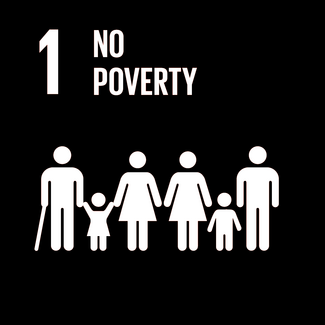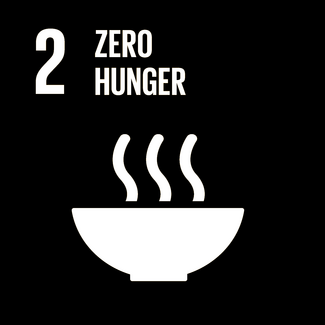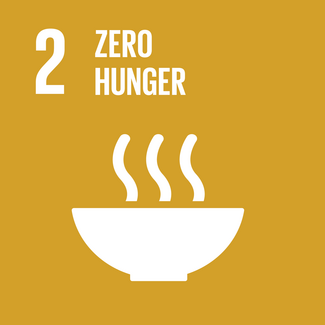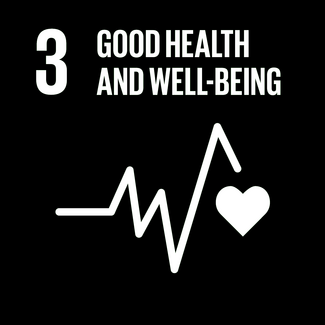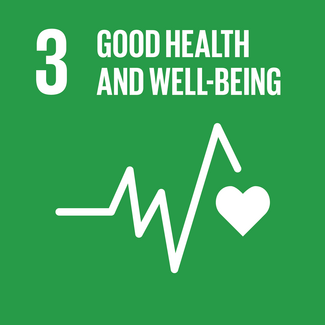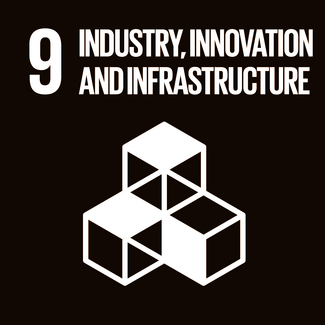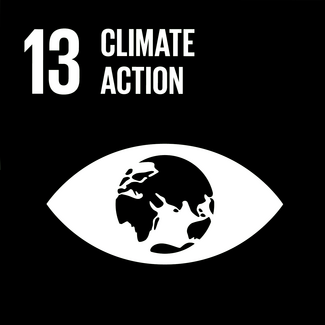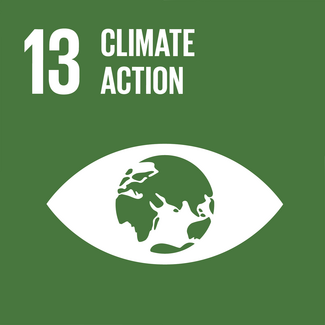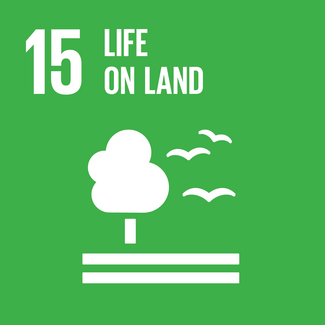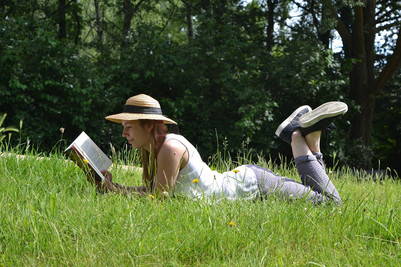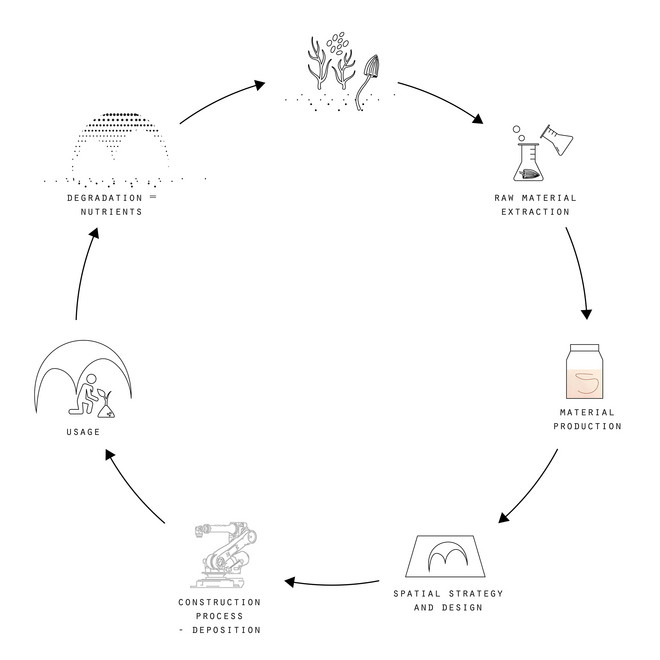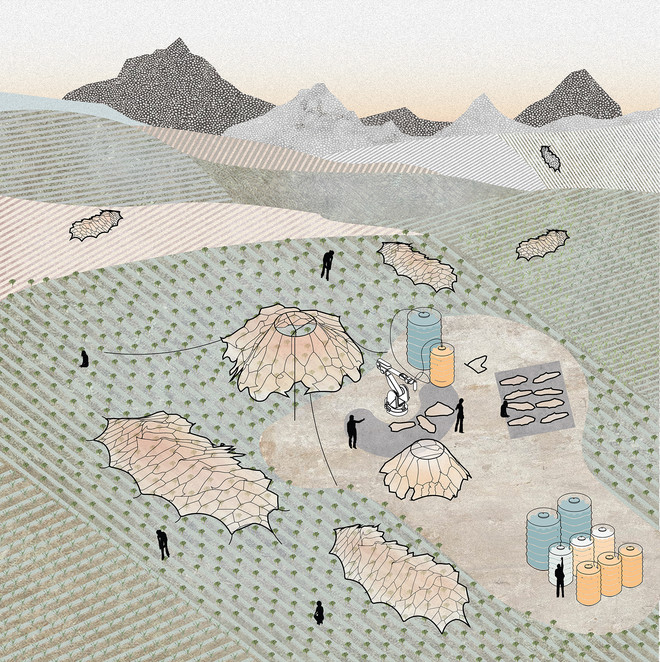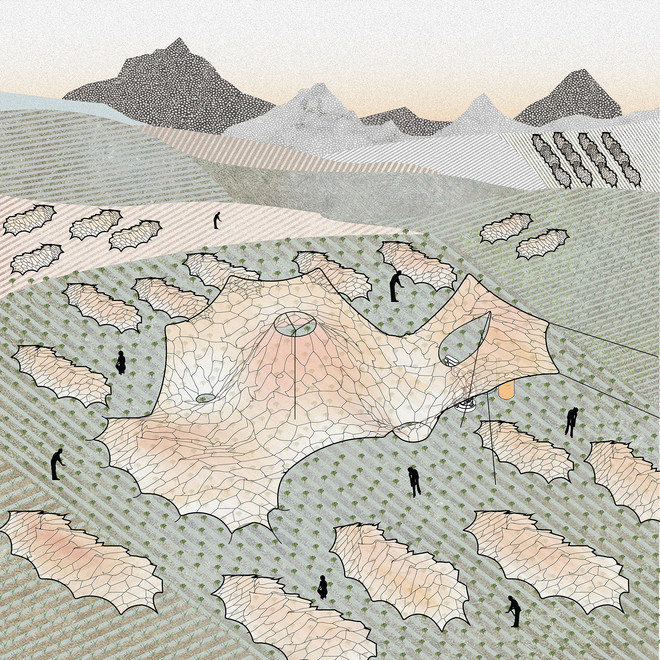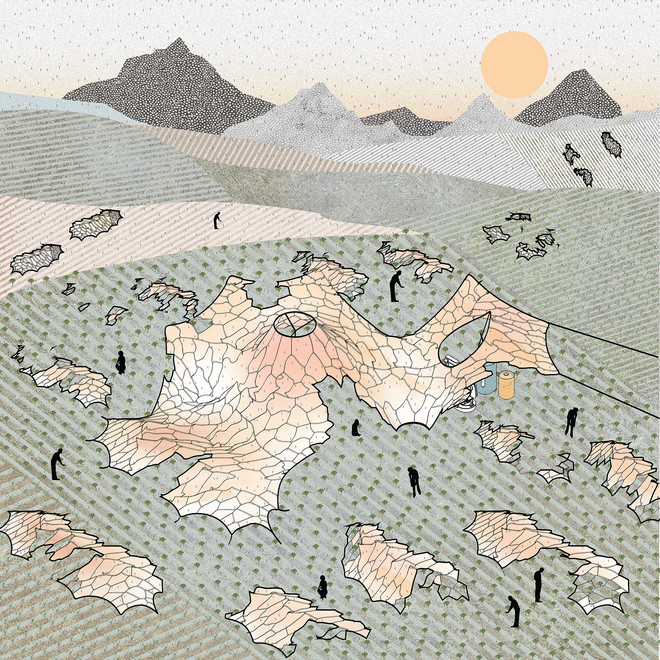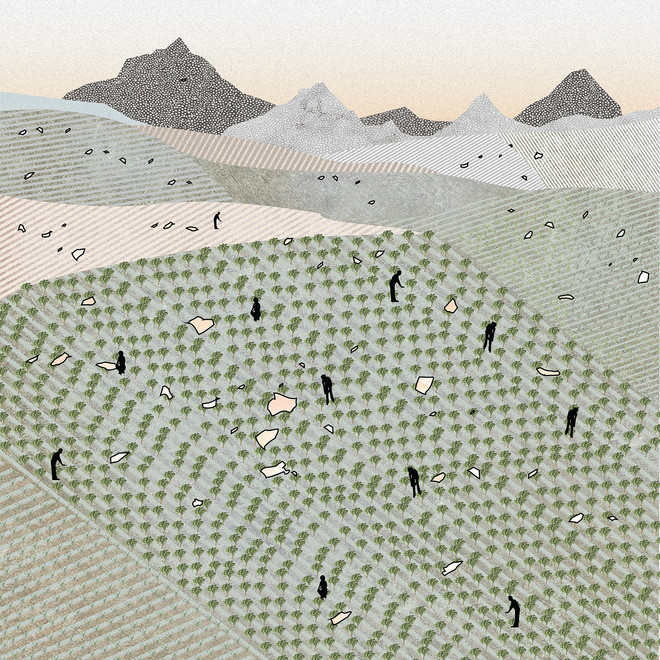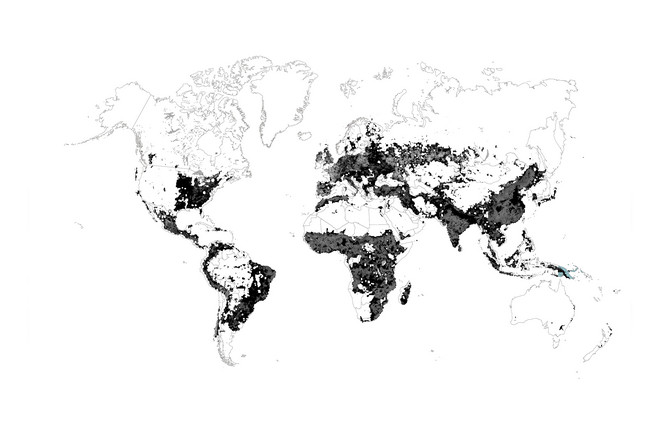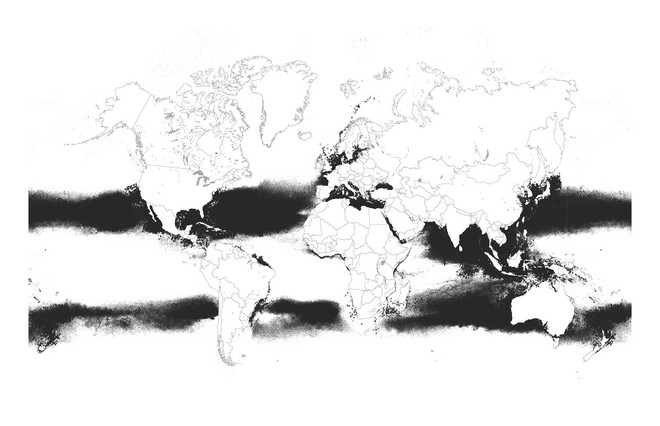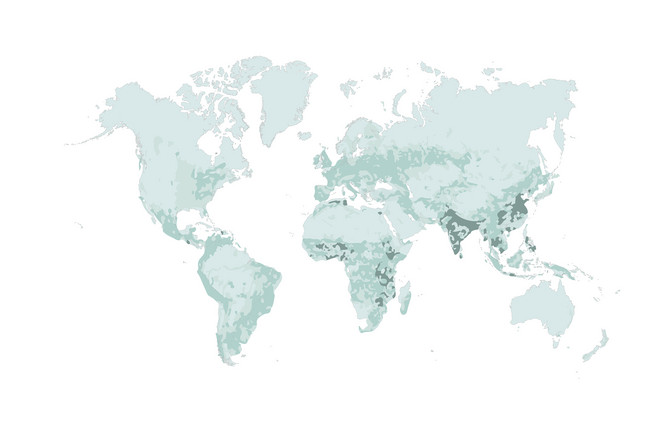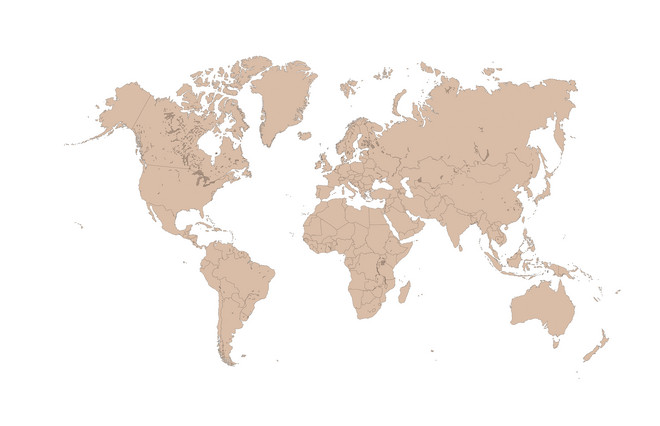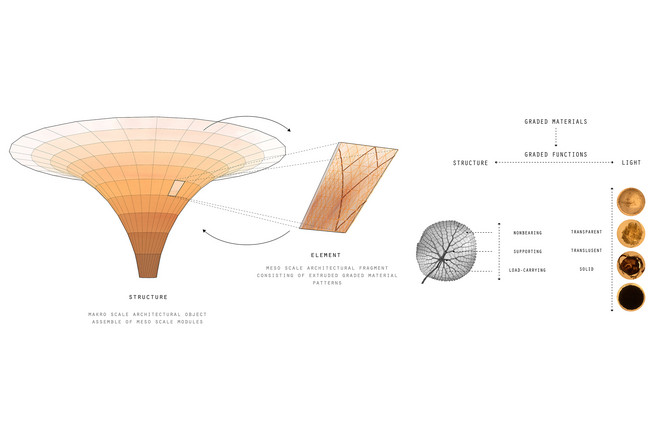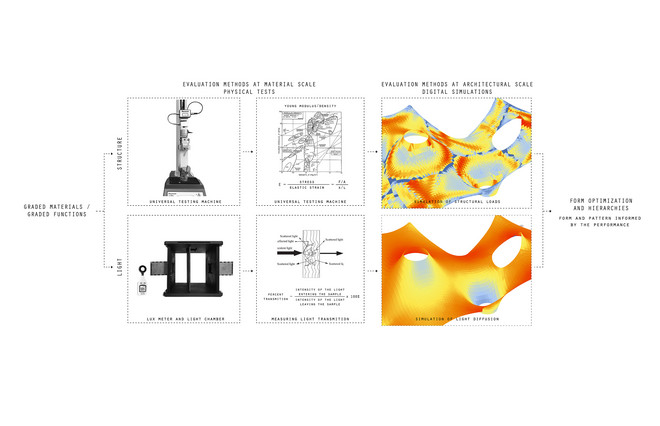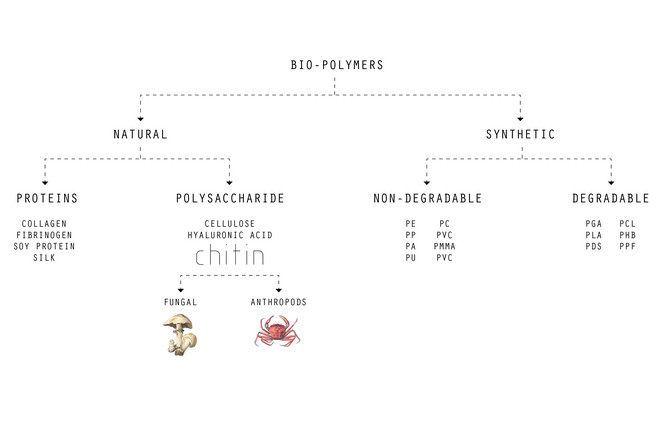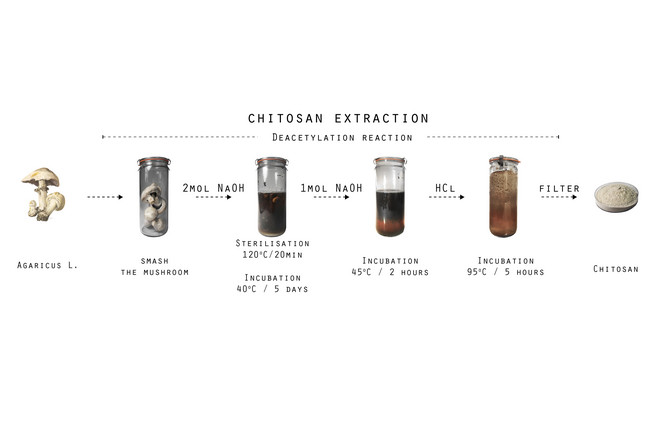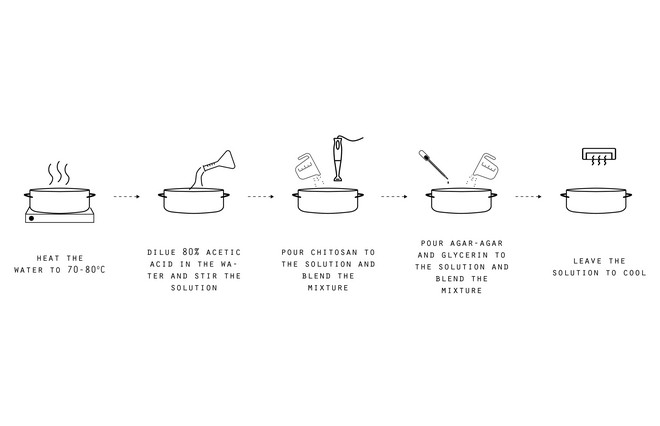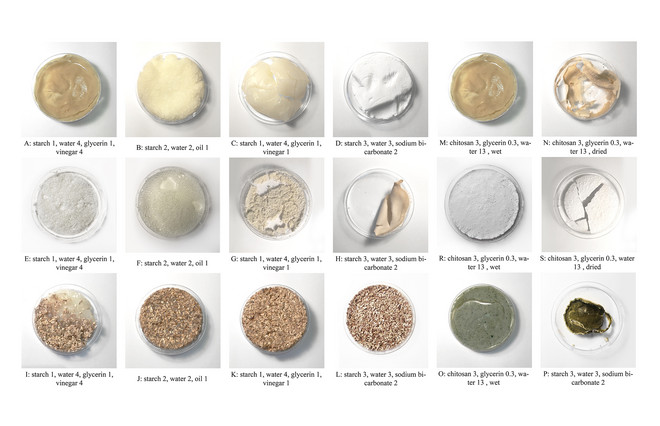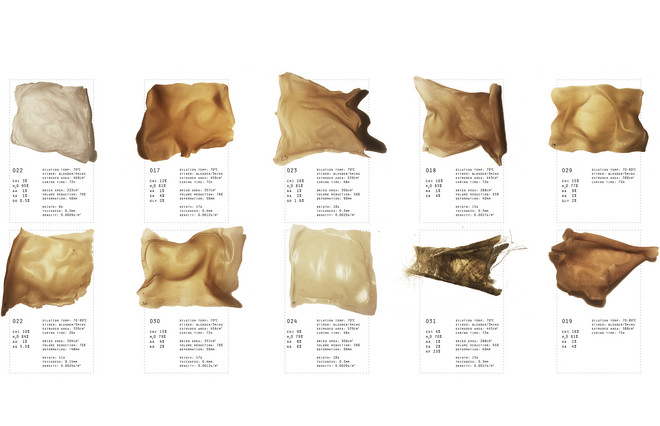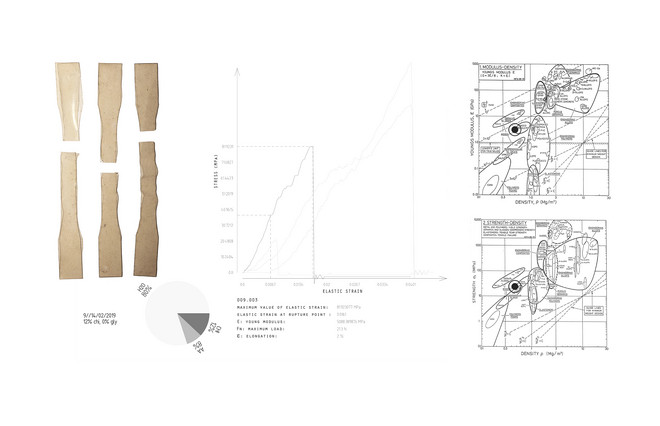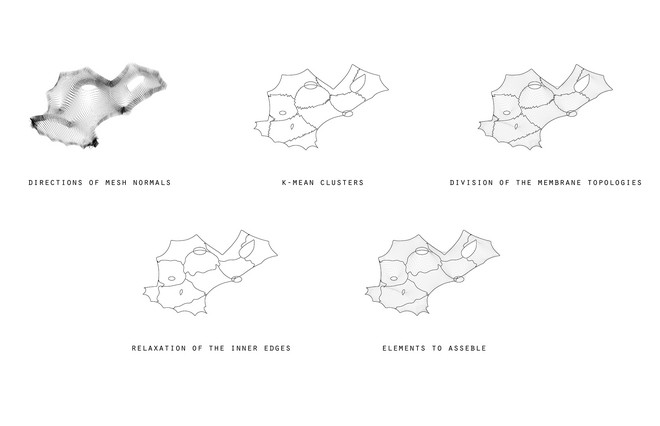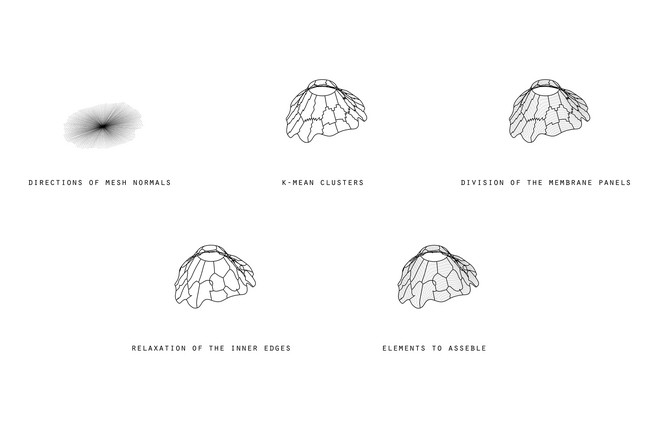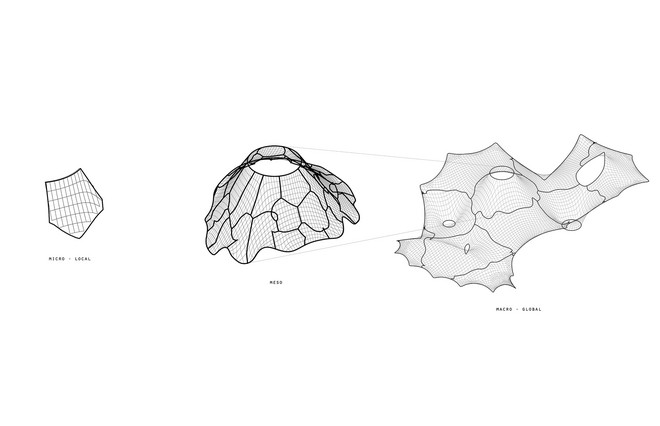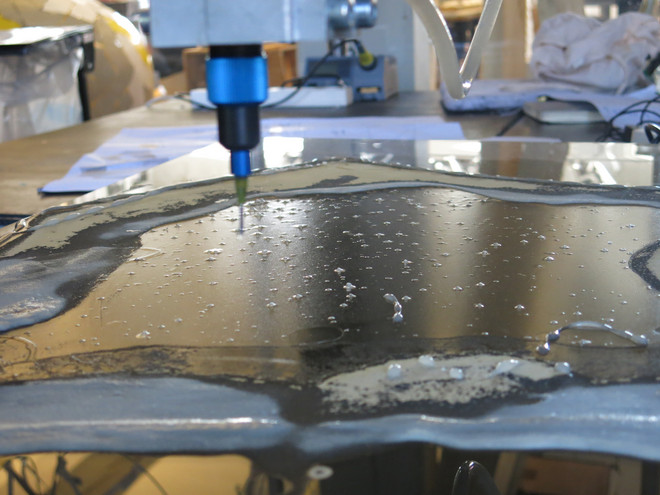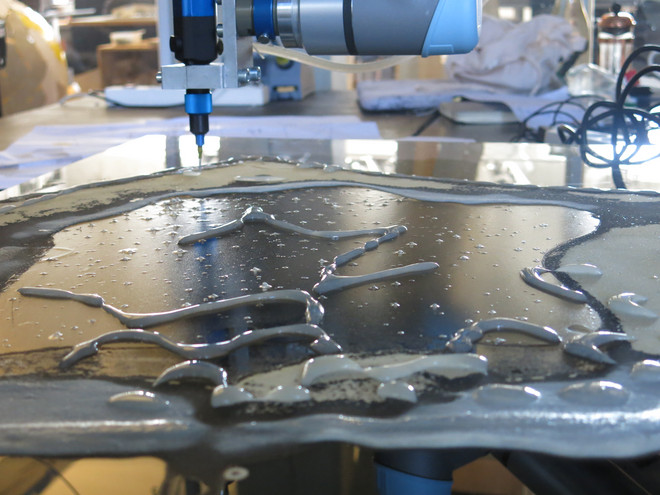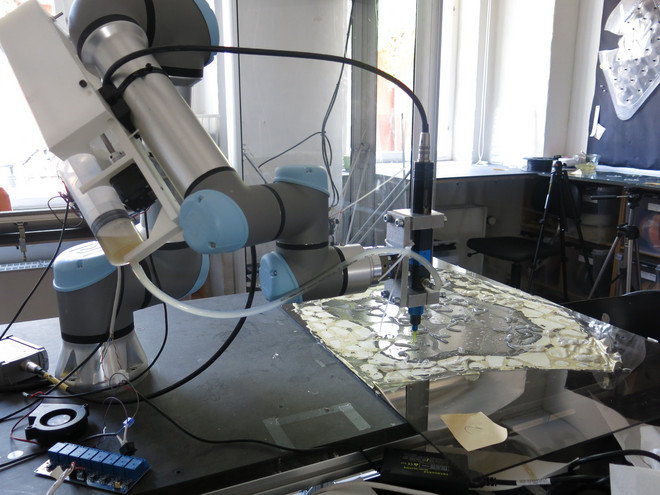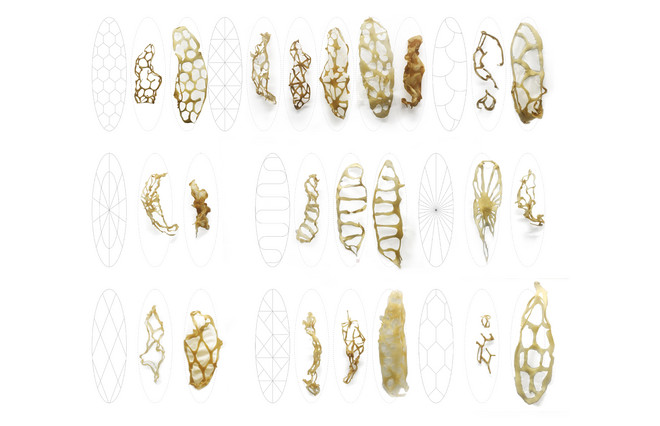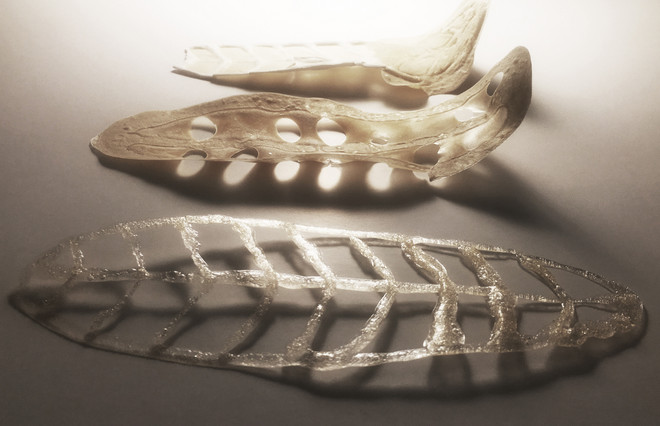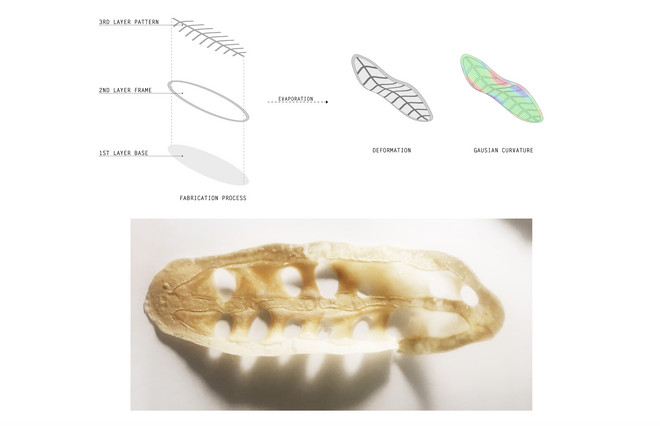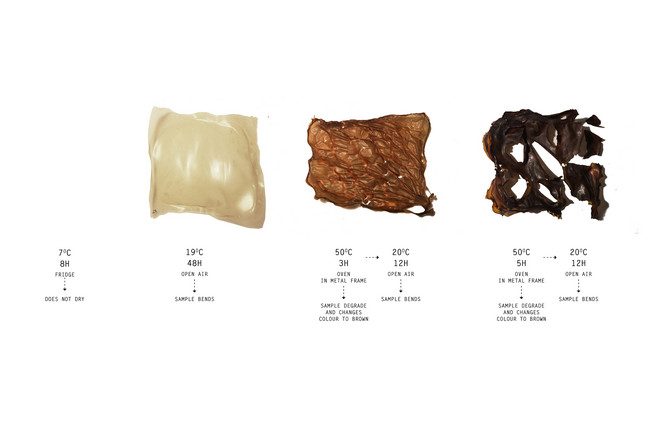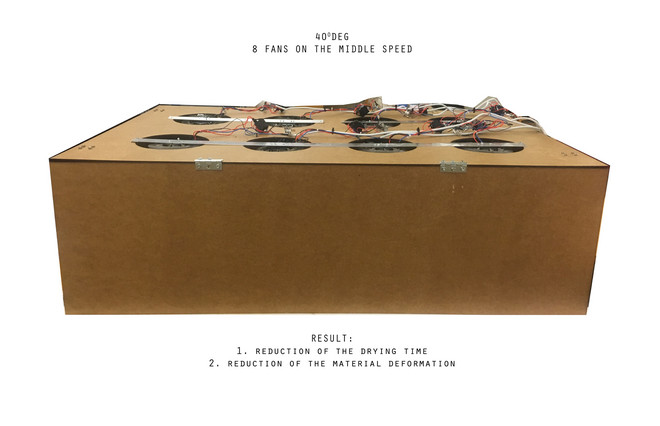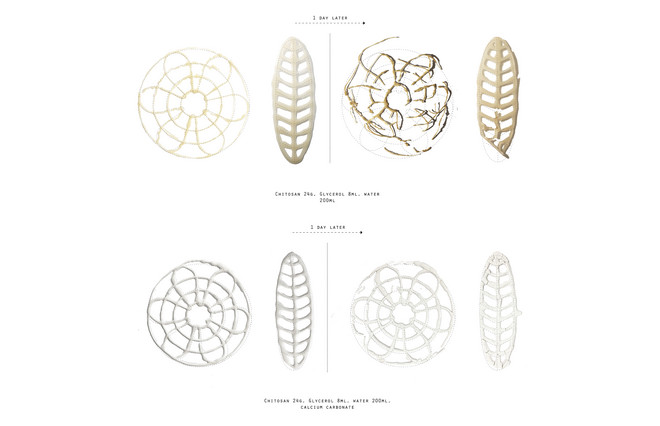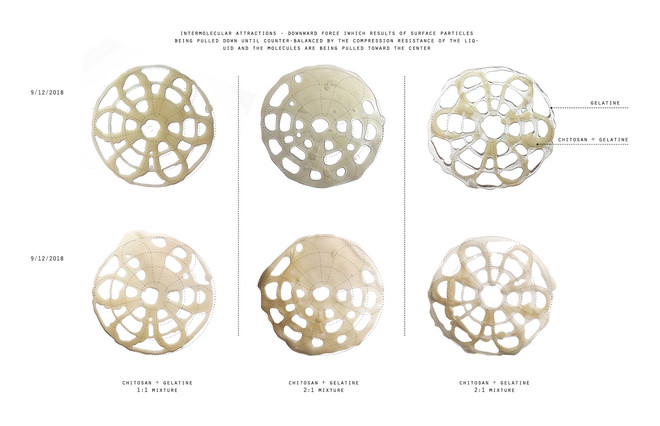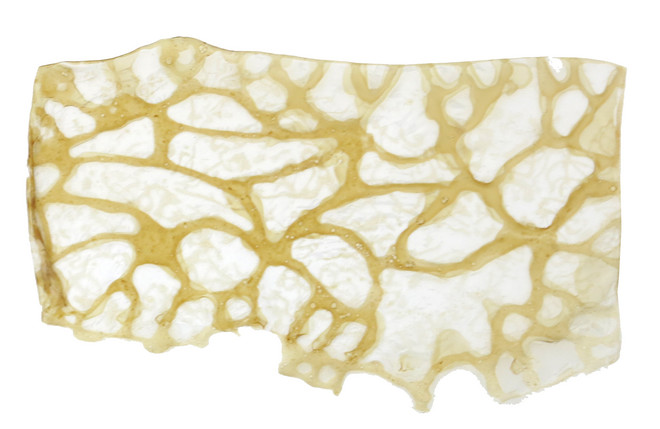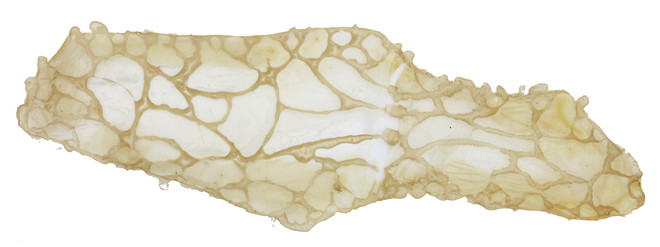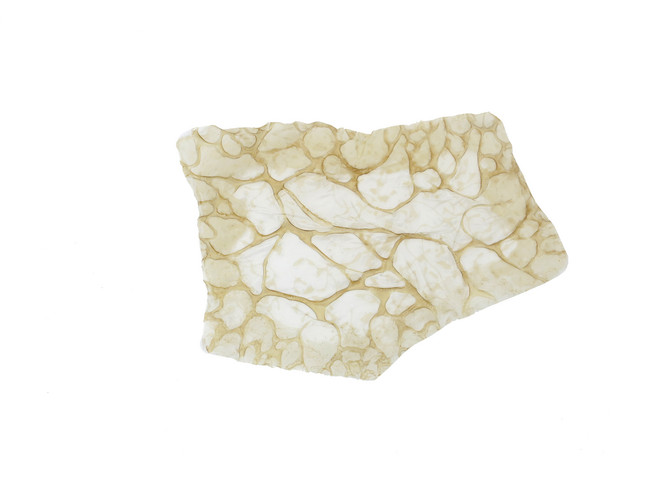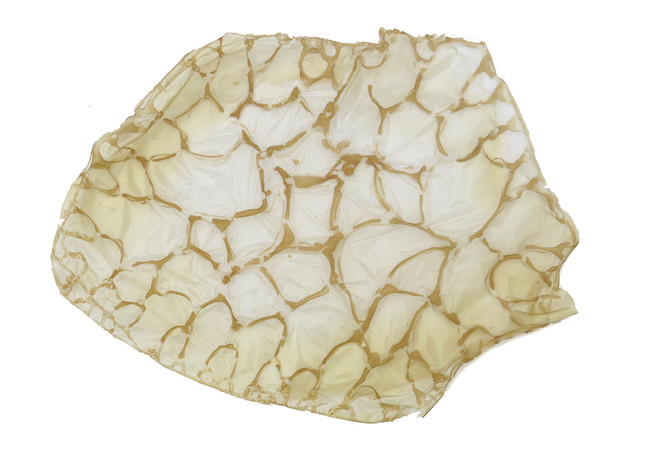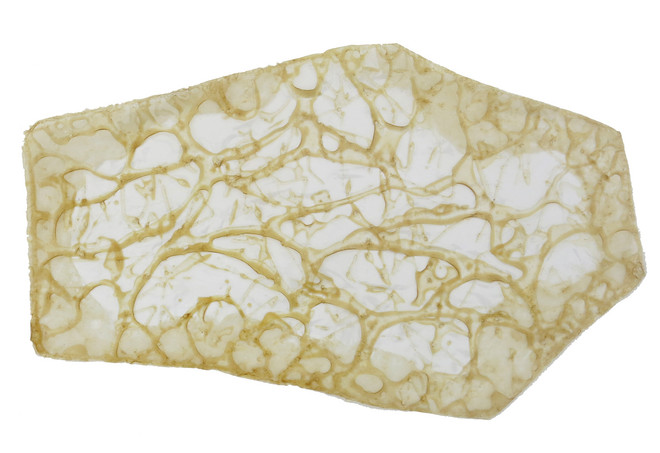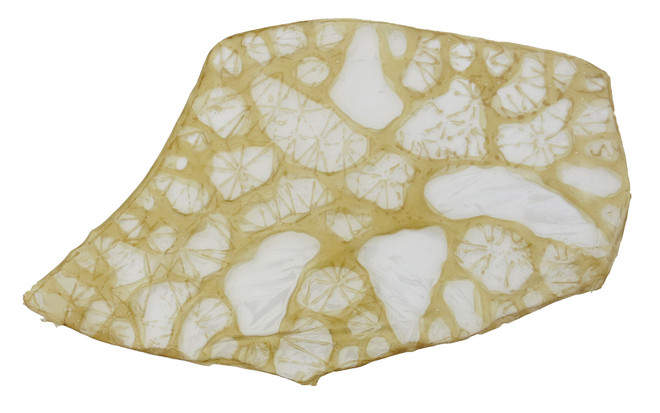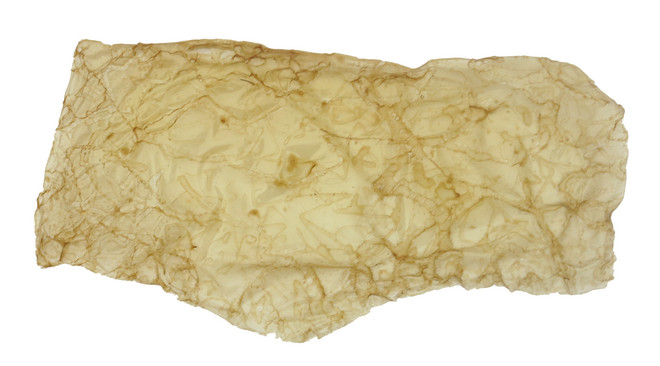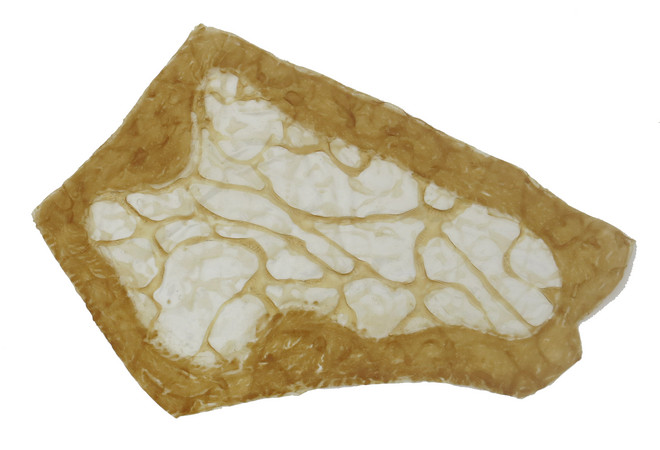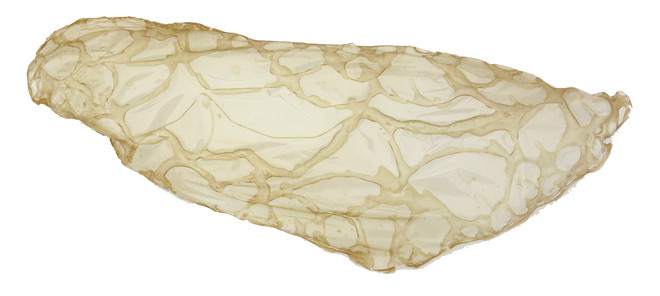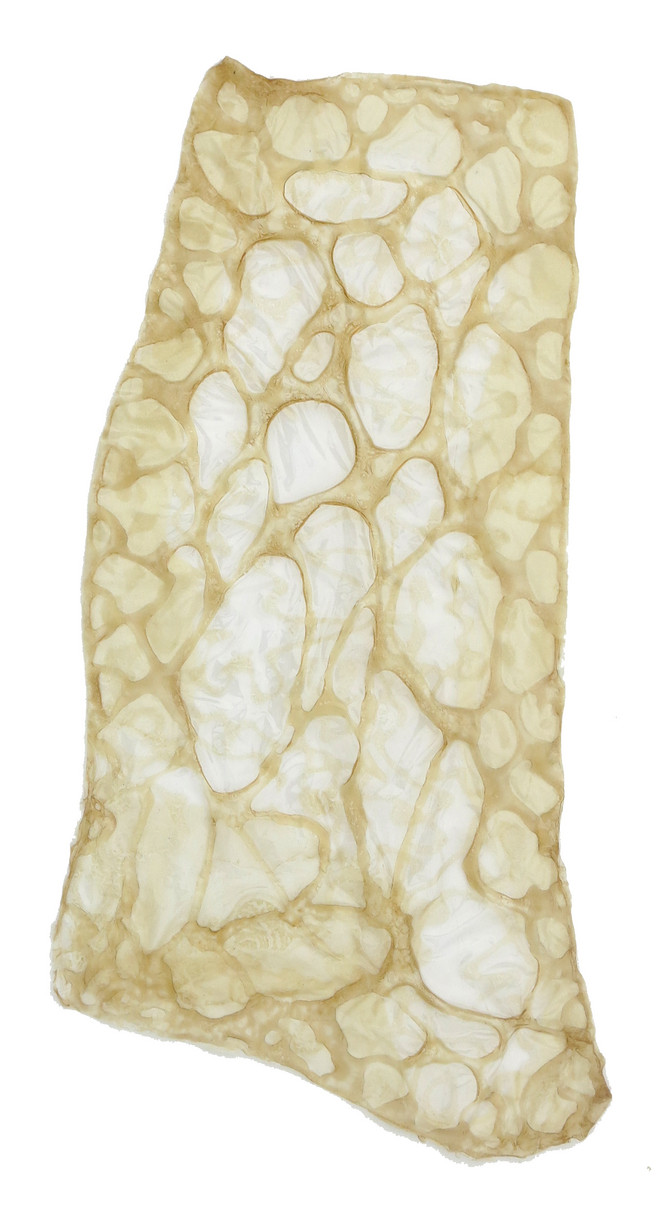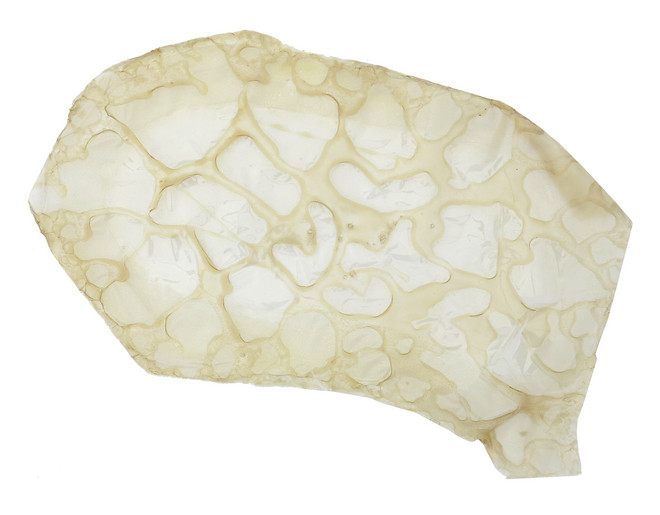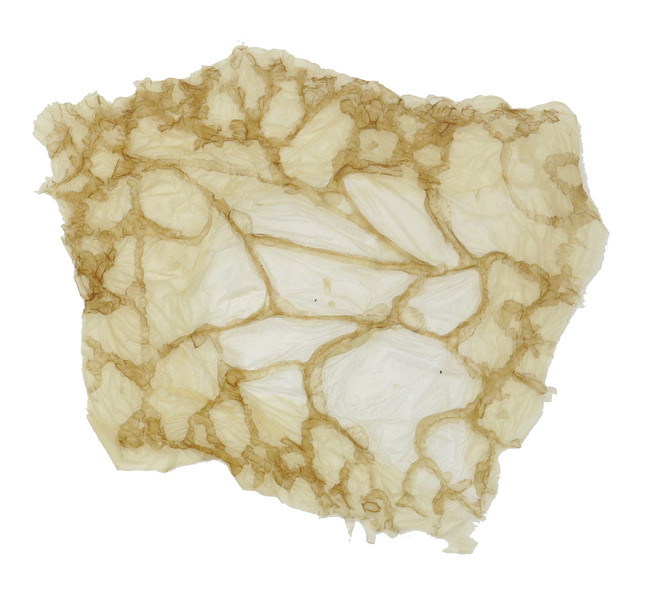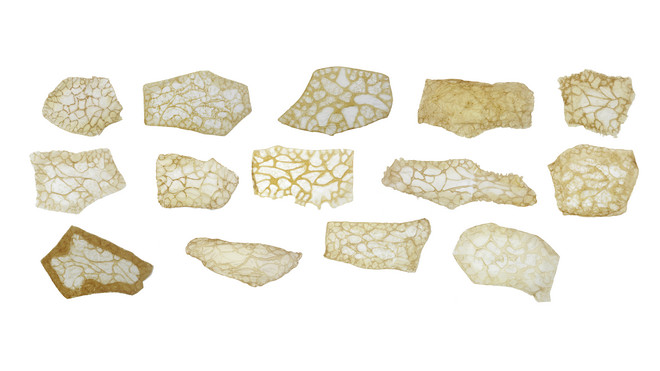
de gradus
Programming heterogenous performance in monolithic form.
Exploration of an additive manufacturing of functionally graded biopolymers.
The objective of this thesis project was an investigation of an additive manufacturing of fungi- and algae- based bio-composites and its functionally graded properties application in a building construction, which was based on physical tests and digital simulations of the material properties linked to the structural and optical performance of an architectural object.
The research aim was to create a sustainable manufacturing process, where the material design and organization is informed by the structural performance, creating homogenous and complex architectural elements for temporary architecture of agricultural shading system, which degrade in soil and in water after the seasonal use and improves the quality of the soil.
Driven by novel biodegradable bio-materials, this research offers a new structural design perspective, combining mushroom-derived protein-based bio-polymers, which create a sustainable manufacturing process from the material selection to the fabrication and post-fabrication use.
The investigation included a study of the bio-polymers behavior depending on proportions of the ingredients in the mixture and follow-up a possibility of programming a post-fabrication performance of the material using time and changes in the environment.
This proposal supports the design of temporary and highly sustainable architectural-scale parts that can interact with the environment by contibuting to soil nutrient levels or to nourishing marine life.
The investigation is based on parallel trajectories of : material exploration made out of renewable and biodegradable resources available and abundant in every habitat on earth; advancement in tools and methods for in-situ robotic additive manufacturing of bio-polymers; development of the strategy for functionality grading of the material properties to optimize the material distribution and reduce the building material waste.
Material organization is informed by the structural performance, creating homogenous and complex body.

The use of agricultural films has become so predominant that there is now a name for it: plasticulture. It’s a $5 billion-plus industry currently that is expected to nearly double by the end of the decade.
Many farmers are in the habit of either burying their plastic waste on-site or burning it.

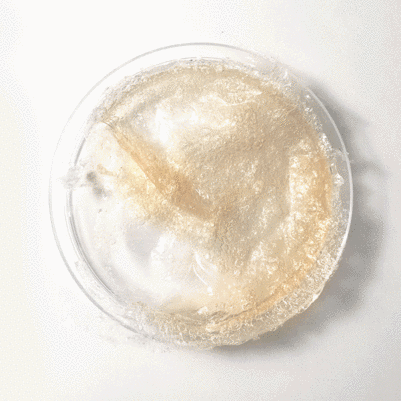
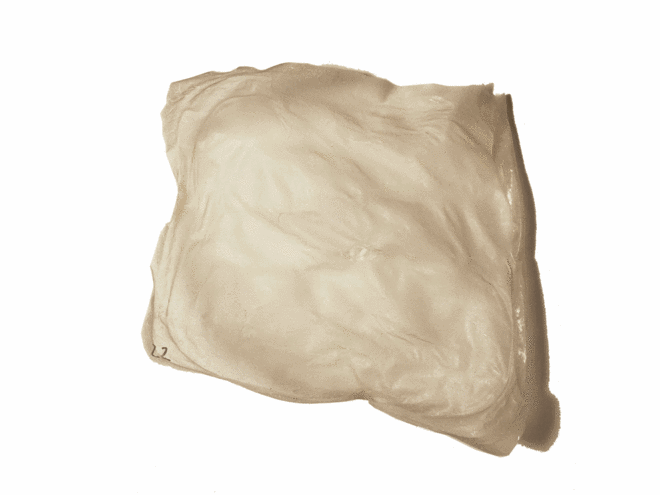
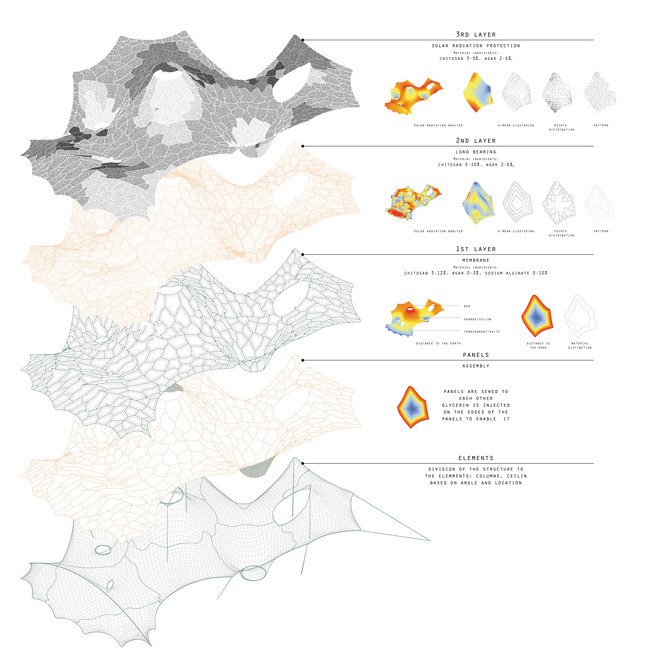
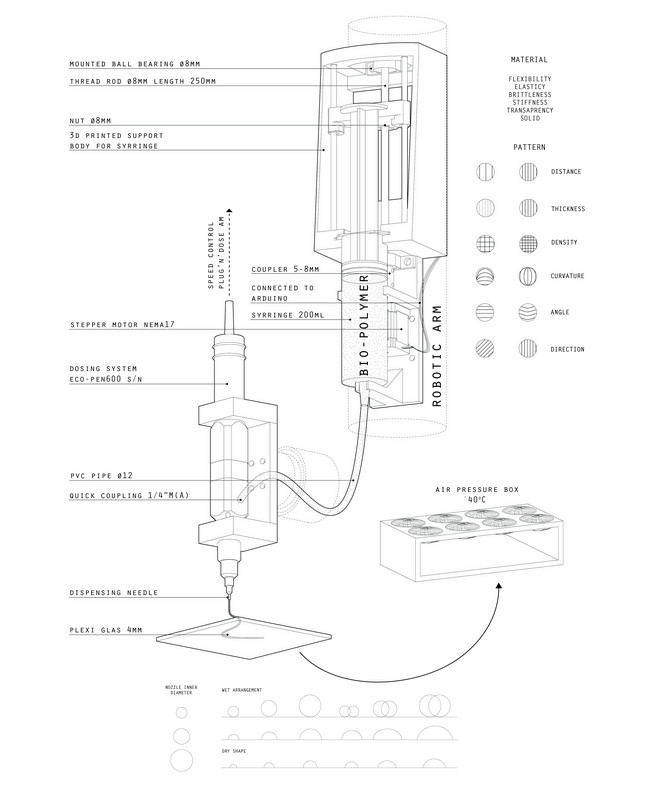

Det Kongelige Akademi understøtter FN’s verdensmål
Siden 2017 har Det Kongelige Akademi arbejdet med FN’s verdensmål. Det afspejler sig i forskning, undervisning og afgangsprojekter. Dette projekt har forholdt sig til følgende FN-mål